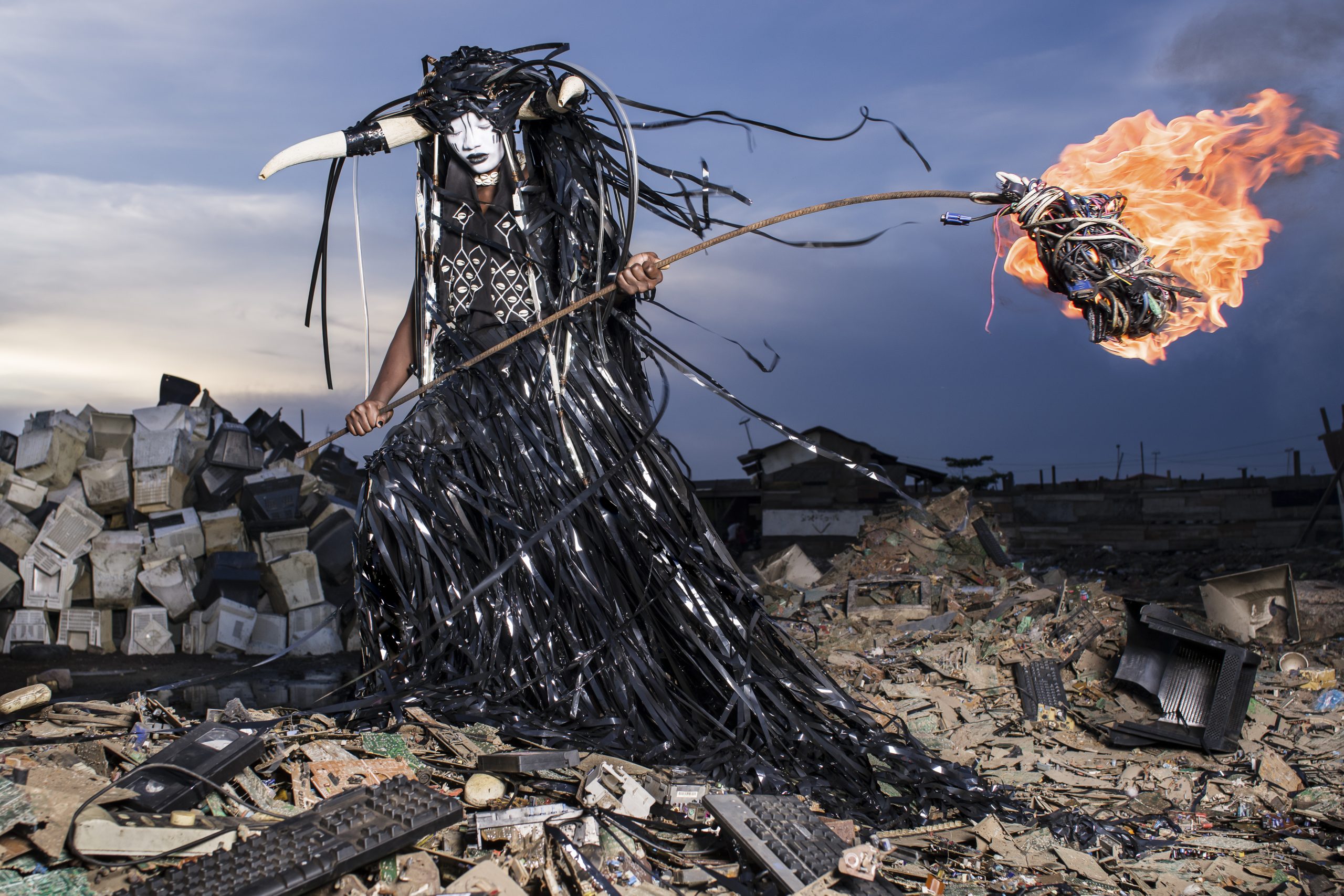
Fabrice Monteiro’s series The Prophecy began in 2013 when the Belgium-born but Benin-raised photographer returned to West Africa after 20 years abroad. The Prix Pictet nominee was excited to go surfing, but was shocked by the severity of the region’s pollution: its seas, wetlands, crop fields and cities strewn with electronic waste, car parts, oil and copious plastic waste.
Monteiro partnered with fashion designer Doulsy and the global charity Ecofund on a series of photographs corresponding to nine different environmental problems in Senegal, including forest fires and oil spills (the project later expanded to neighbouring West African countries). The scenes draw on the imagery of West African history, masquerades and animalist mythologies, becoming a fusion of harrowing documentary and heroic optimism.
In one image, a djinni (a supernatural spirit in Muslim demonology) wears a costume composed of discarded rubbish, positioned down its body in order of decomposition time. It allows Monteiro to riff on the figure of Ogun, an important deity in the voodoo mythology of West Africa’s Gulf of Guinea. It is said that on the second day of creation, Ogun (the spirit of fire and iron) made the earth hospitable for humans.
“The scenes draw on West African history, masquerades and animalist mythologies, a fusion of harrowing documentary and heroic optimism”
Ogun is pictured in Agbogbloshie, a district on the Korle Lagoon close to the centre of Accra, commonly termed the world’s largest electronic waste dump. Tonnes of tech waste are illegally shipped from developing countries to such sites, often under the pretence of repair or reuse, a legal loophole which makes exact volumes and countries of origin difficult to trace. Once discarded, parts are disassembled and burnt to extract their valuable components, especially copper from various cables. Children and young men make up a mass workforce, exposing themselves, and the local environment, to toxic and carcinogenic fumes as they labour.
VHS cassettes, keyboards and a stack of computer monitor shells point to the disheartening scale of the problem, items stripped of value and human attention, but not before they have inflicted their final damage on the earth and its workers. Draped in black film and bearing a torch of wires, Ogun stands solemnly as a reminder of humankind’s abuse of a once untouched land created especially for them.
Ravi Ghosh is Elephant’s editorial assistant
Prix Pictet
Fabrice Monteiro is shortlisted for the Prix Pictet. The winner is announced on 15 December 2021 at the opening of an exhibition of works by the 12 shortlisted photographers at the Victoria and Albert Museum, London
VISIT WEBSITE





